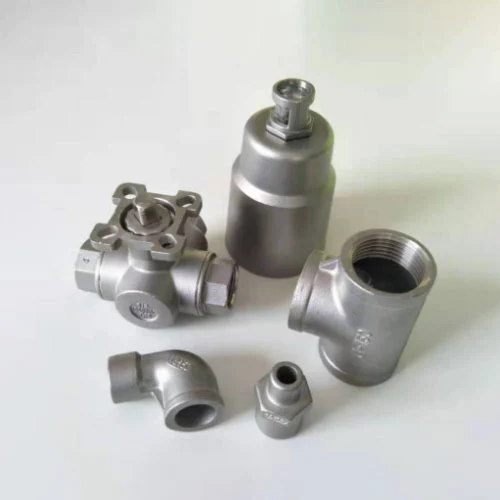Understanding Metal Ductile Tee Casting: Process and Properties
2025-02-08
Ductile iron is a widely used material in the casting industry due to its excellent strength, toughness, and flexibility. Among its many applications, ductile tee castings are crucial components in piping and fluid distribution systems. These fittings are essential for directing fluid or gas through pipeline networks in industries such as water supply, oil and gas, and industrial manufacturing.
This blog explores the casting process, material properties, and why ductile iron is the preferred choice for these fittings.
What is Metal Ductile Tee Casting?
A ductile tee is a pipe fitting with three openings, allowing fluid or gas to be distributed in different directions within a pipeline system. These fittings can have equal or reducing outlets, depending on the design requirements.
Ductile iron, also known as nodular cast iron, is used for these fittings due to its unique ability to deform under stress rather than cracking. This makes it highly suitable for high-pressure piping systems. Unlike gray cast iron, which is brittle, ductile iron has graphite in a spheroidal form, giving it superior mechanical properties.
Casting Process of Ductile Tee Fittings
The production of ductile iron tee castings involves several critical steps to ensure strength, durability, and precision.
1. Pattern Making
Before casting begins, a pattern (typically made of wood, metal, or plastic) is designed to create the mold cavity. This pattern represents the final shape of the tee fitting.
2. Mold Preparation
Sand molds or permanent molds are prepared using the pattern. Sand molds are commonly used in sand casting, which allows for high-volume production at a lower cost.
3. Melting and Pouring
Raw ductile iron is melted in an induction furnace at temperatures between 1,300–1,500°C (2,372–2,732°F). Additional alloying elements such as magnesium, silicon, and manganese are introduced to improve strength and ductility. The molten iron is then poured into the prepared mold cavity.
4. Nodularization Treatment
The most critical step in producing ductile iron is the nodularization process. This involves adding small amounts of magnesium or cerium to the molten metal to change the graphite structure from flaky to spherical. This modification gives the iron its ductile properties, allowing it to withstand stress and impact.
5. Cooling and Solidification
Once poured, the casting is left to cool and solidify within the mold. Proper cooling is essential to prevent defects such as shrinkage, porosity, or cracks.
6. Cleaning and Machining
After cooling, the castings are removed from the molds and cleaned to remove excess material, sand, or slag. Some parts undergo machining to achieve precise dimensions and smoother surfaces.
7. Heat Treatment and Quality Inspection
To enhance mechanical properties, the ductile iron castings may undergo heat treatment processes such as annealing or stress relieving. Quality control checks, including non-destructive testing (NDT), dimensional analysis, and pressure testing, ensure that the fittings meet industry standards.
Key Properties of Ductile Tee Castings
Ductile iron tee castings offer several advantages over traditional materials like gray iron and steel.
- High Tensile Strength – Ductile iron can withstand heavy loads, making it ideal for high-pressure piping systems.
- Excellent Ductility – Unlike brittle materials, it can deform under stress without breaking.
- Superior Corrosion Resistance – Coatings such as epoxy, galvanization, or painting can enhance corrosion protection.
- Thermal Stability – Can withstand extreme temperature fluctuations without losing structural integrity.
- Good Machinability – Easier to machine than steel, reducing manufacturing costs.
Ductile tee castings play a crucial role in fluid transportation systems, ensuring efficiency, durability, and long service life. The casting process ensures that these fittings are strong, flexible, and resistant to extreme conditions. Whether used in water distribution, oil and gas pipelines, or industrial applications, ductile iron remains a reliable choice for engineers and manufacturers.



